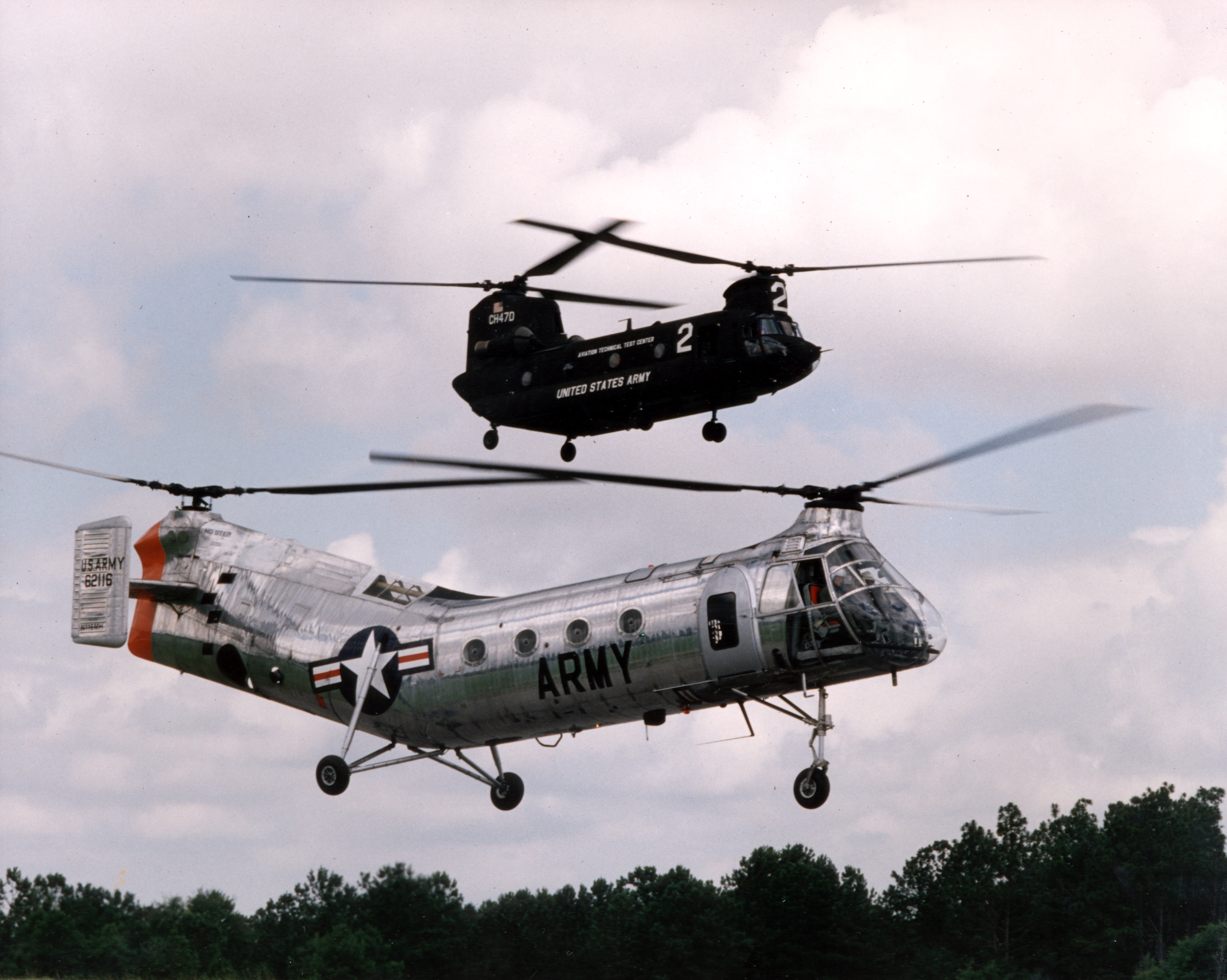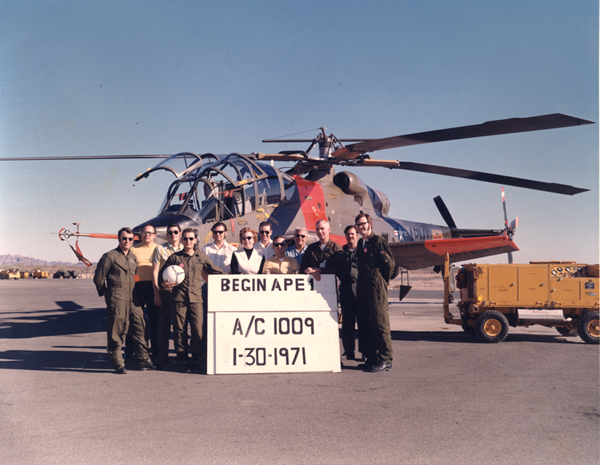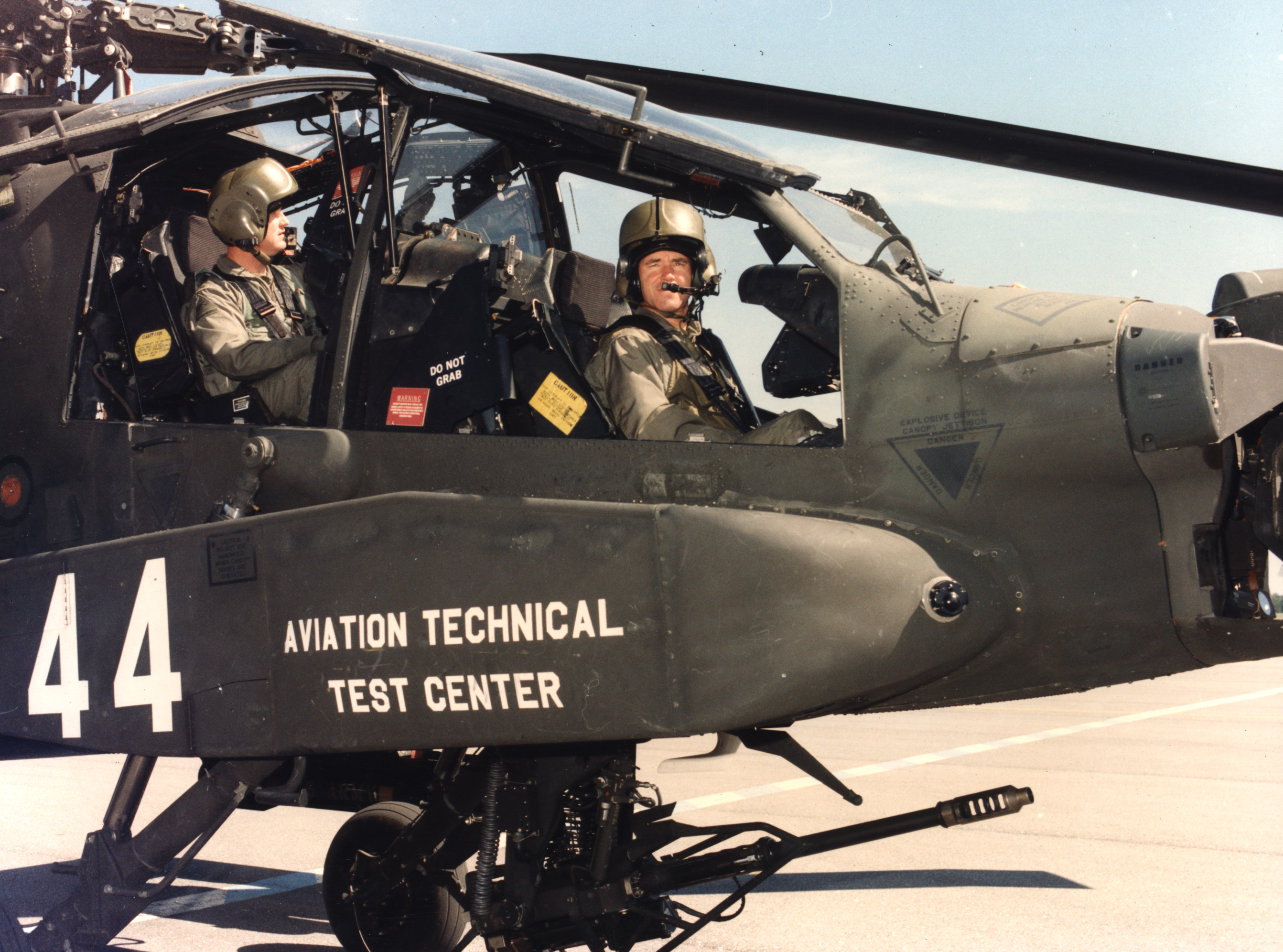- Homepage >
- Organization >
- History
History of the U.S. Army Aviation Technical Test Center (ATTC)

The U.S. Army Aviation Technical Test Center (ATTC), one of six test centers assigned to the former U.S. Army Test and Evaluation Command (TECOM), was formed on 1 October 1990 when the U.S. Army Aviation Development Test Activity (ADTA) and the U.S. Army Aviation Engineering Flight Activity (AEFA) were consolidated.
In November 1959, the Transportation Material Command's Liaison Office was activated at Edwards AFB, Calif. The office was transferred, in 1963, under TECOM and was redesignated as the U.S. Army Aviation Material Command (AVCOM). In 1968, AVCOM was redesignated the U.S. Army Aviation Systems Test Activity (USAASTA). In 1974, the name was changed to AEFA. In Alabama, the Transportation Aircraft Test and Support Activity (TATSA) was activated on 1 July 1956, and the Signal Aviation Test and Support Activity (SATSA) was activated in the fall of the same year-they shared the mission of performing logistical testing of all standard and nonstandard avionics equipment. The Continental Army Command (CONARM) Board Number 6 was originated on 1 January 1957 and was renamed the U.S. Army Aviation Board. The TATSA, the SATSA, and the Aviation Board were consolidated as the U.S. Army Aviation Test Board under TECOM. The Board was deactivated on 28 July 1976, and ADTA was formed on 6 June 1979. In October 1990, AMC directed that AEFA be consolidated with ADTA and the combined organizations be designated as ATTC under TECOM. Concurrently, AEFA became the Airworthiness Qualification Test Directorate (AQTD) of ATTC. Finally, in 1996, the AQTD was consolidated with the other elements of ATTC at Fort Rucker.
On 1 October 1999, a new era in modern military testing began as Army developmental and operational testing consolidated under one command, the newly formed U.S. Army Test and Evaluation Command (ATEC) in Alexandria, Va. The combined history and accomplishments of the genesis test organizations and the consolidated organizations that evolved over time have provided ATTC a proud past on which to build. The rotary- and fixed-wing aircraft that have supported the warfighting capability for the U.S. Army since the 1950's have been the product of ATTC's and its predecessor organizations' test and evaluation. The growth and effectiveness of U.S. Army Aviation in the latter half of the 20th century can be attributed in no small measure to the professionalism of the military, civilian, and contractor personnel who have served ATTC and its progenitors.


